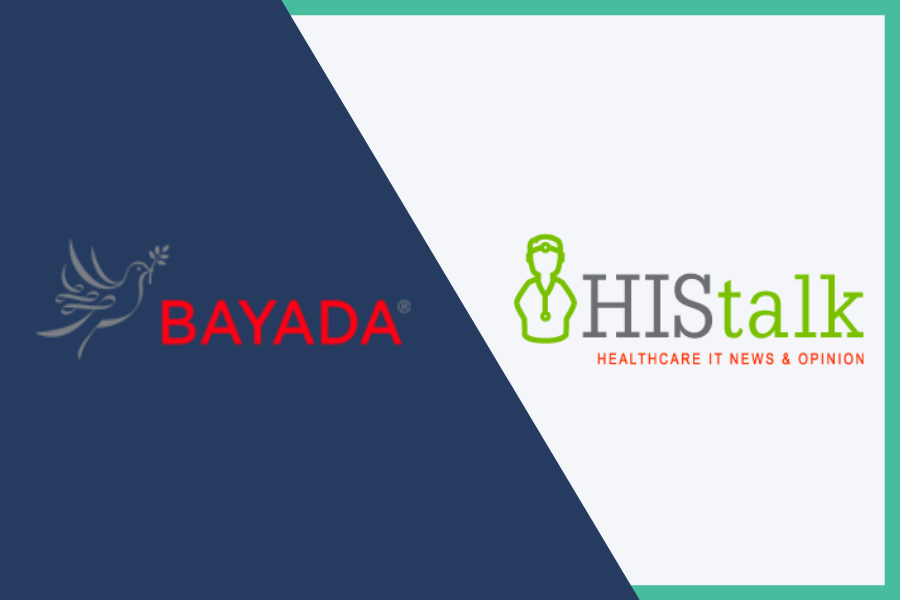
David Baiada, CEO of Bayada Home Health Care, a top national provider of home-based healthcare services, spoke to HIStalk about the “power and opportunity” of care at home, activating digital technology during the pandemic, and why its new joint ventures with health system are the way forward.
What is changing about home health and the involvement of health systems in it?
We’ve been working in the home for centuries. We’ve been delivering remote monitoring and virtual care for a decade or more. But the last 14 months clearly have created a bright spotlight on the power and opportunity that exists with the services we can provide in the home. Maybe we can deliver a high-quality service at scale, at a lower cost, in the place that people prefer, which is their living room or their home, versus an institution. Maybe we can use technology to deliver certain types of services and interventions virtually or by video.

What levels of integration, continuity of care, and accountability are you seeing between hospitals and home care organizations?
It has been emerging for a while, but in the past year, the dialogue in the health system boardroom has been around the strategic importance of home and community-based care delivery, the extension of the health system’s brand into the home, the seamlessness of the transition from acute to home — it’s moving way up the strategic priority list. You are seeing a lot of health systems say, we need to be really good at this. Some are saying, we are going to start reducing inpatient beds over time.
Health systems are taking on an increasing percentage of the risk dollar and are incentivized to think creatively about how less-expensive remote, virtual, and home-based care can help create better experiences at a lower cost.
All this is part of a broader shift, too. Payment could unfold over time where health systems are taking on an increasing percentage of the risk dollar, in which case they are properly incentivized to think creatively about how non-acute or less-expensive remote, virtual, and home-based care can help create better experiences and better outcomes at a lower cost. We have a joint venture of structures with health systems that are designed specifically in this context. How do we jointly own Bayada-managed home-based care delivery capabilities to give them instant access and continuous innovation around best-in-class home-based care?
What new technologies are important to your business?
When we talk about challenges related to health system integration and extension of their capabilities into the home, one of the most fundamental challenges is how a transition works. How do you coordinate someone’s transition from a hospital bed to their living room and all of the steps that happen along the way? They may have a stop at a skilled nursing facility. They may need new medications, but they have no transportation to get them. They may need coordination and conversations between multiple specialists.
Today, all these things happen in silos. Platforms like Dina’s care-at-home platform and network are trying to create seamless transitional care, and that provides benefits to the patient and their family. They get empowered with an understanding of what’s happening. It has benefits to the health system that is trying to ensure that this person has a path home in a timely way. It has benefits to us as a home-based provider because we then are empowered with historical information context before we enter the house, which helps us create a better service and keep them safe at home.
Dina is a great example of solving a complex but straightforward problem. When someone arrives at a hospital, how do you make sure that the transition out of the hospital back to home with any steps in between happens in a way that’s actually productive versus super frustrating?
What changes do you expect in-home care over the next three to five years?
The percentage of healthcare services that can be reimbursed and supported from a regulatory perspective will continue to increase meaningfully. That will be empowered by better capabilities from organizations like ours. And better technology makes this delegation of services more palatable. But empowering scalability of some of this innovation requires regulatory and reimbursement structures to evolve, too.
Read the complete interview with David Baiada at HIStalk.
Interested in the latest health-at-home news? Sign up for our newsletter for industry updates.




